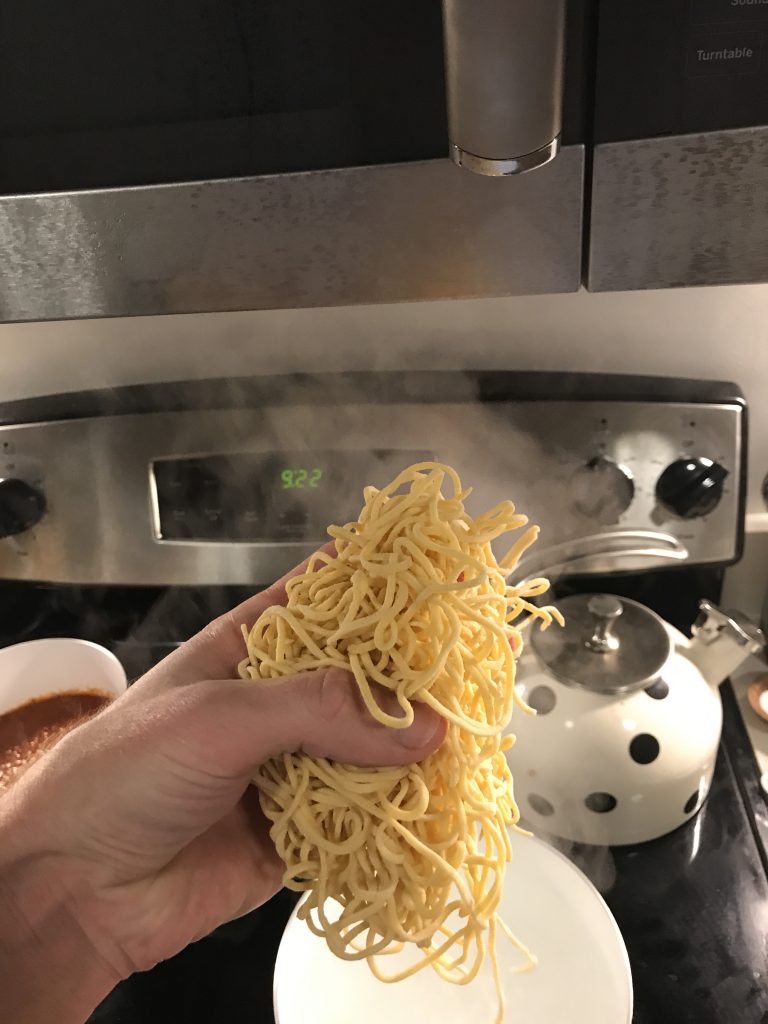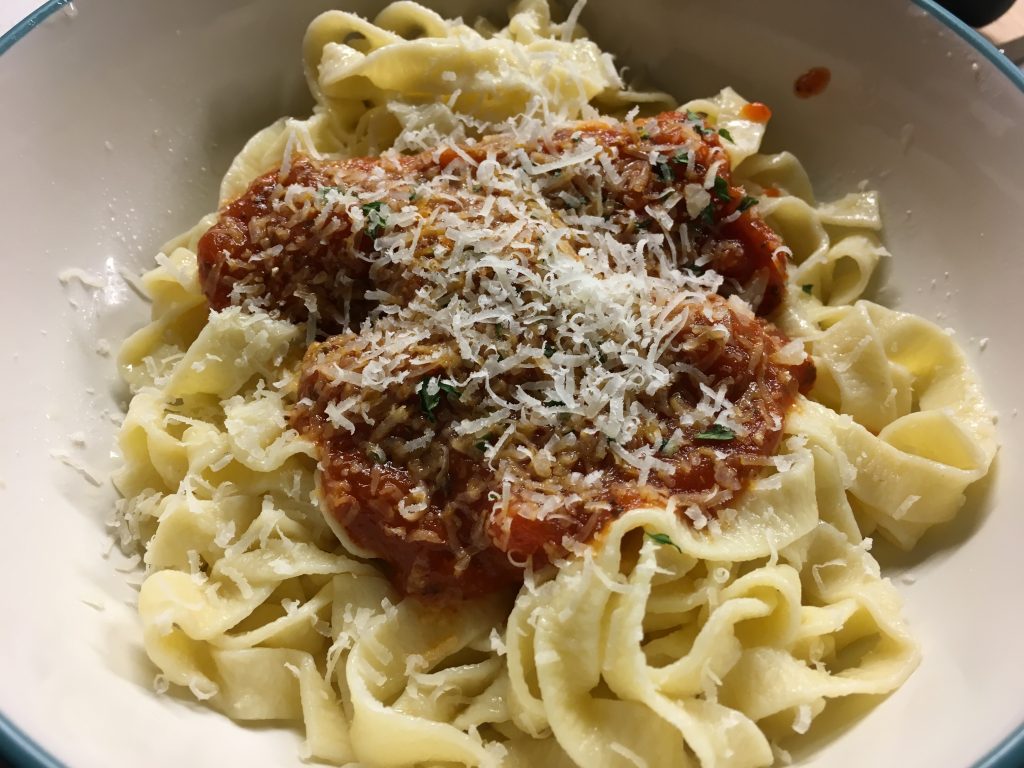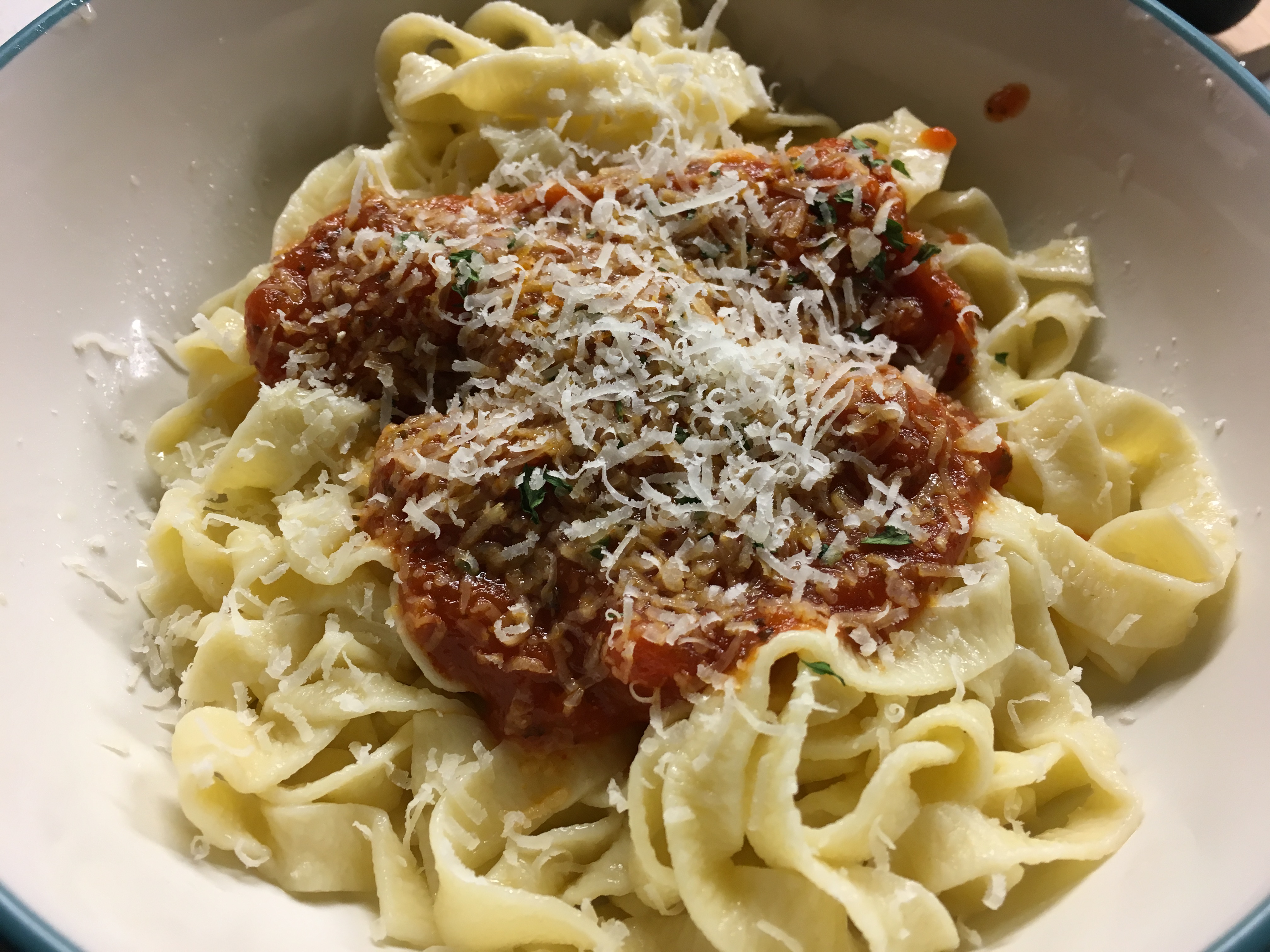We can’t go back to store-bought dry pasta ever again! After a couple tries, I’ve gotten this process down: so much goes into developing the technique of kneading and rolling. The first time was decent, second attempt was way too dry (too much flour, not enough egg), and the third try turned out great. It takes about 2 hours from start to plate.
Tip: instead of cutting the noodles, try ravioli!
Handmade Pasta
-
Prep Time:
1h 30m
-
Cook Time:
2m
-
Total Time:
1h 30m
Ingredients
- 2 c Flour
- 3 Eggs
- 1 tbsp. Olive oil
- 1/2 tsp. Salt
Instructions
- Clear and clean a workspace large enough to knead dough.
- Sift the flour onto the workspace, reserving 1/2 cup of flour on the side. Make a well large enough to fit the eggs.
- Crack the eggs into the well, add the olive oil and salt.
- Using a fork, scramble the eggs, pulling in bits of the flour as you go. This is a steady, controlled scramble. The egg / flour mix will get pretty sticky, so don't rush it.
- Continue to fold in the flour until the walls break down.
- Mix and knead somewhat haphazardly to get all the ingredients together into a ball.
- Knead the dough for 5-6 minutes, adding any of the reserved flour as necessary to keep it from sticking to your surface. I like reserving around 1/2 cup because if it gets too dry it's tougher to get it back to a good place. If it does get too dry, wet your hands and keep kneading.
- Wrap dough in saran wrap and let sit for at least 30 minutes. At least an hour would be ideal.
- Affix the pasta machine to the table with a moist washcloth underneath (this will help keep it in place).
- Unwrap dough, cut it in half with a sharp chef's knife. You'll roll out the dough one half at a time. Re-wrap one half in seran wrap for later.
- Taking the half you'll be working with, lightly dust your workspace with flour and flatten the dough longwise out so it will fit in the pasta roller (thickness and width). This is best done with a rolling pin.
- Lightly dust the pasta roller. Roll 10-12 times on the widest setting (1), flouring the dough as necessary. Between each roll, fold the dough in half, alternating between lengthwise and widthwise. Alternate between which end gets fed into the roller each time.
- Continue to reduce the setting until the desired width. Continue to flour the dough so it doesn't get sticky. Continue to alternate which side is fed into the roller each time, but don't fold the dough anymore.
My pasta roller has 9 settings. 8 is probably best for the linguine size, but 9 is generally too thin unless I'm making small ramen noodles.
- When rolled out, it should be around 6-8 feet long. Lay out the dough, and cut it into lengths (rectangles) with a knife, ~15-20” long and dust with flour so they don't stick together. This is the length of each noodle.
- At this point you can either use the pasta rolling machine cutting attachment, or for thicker noodles (ala papardelle), loosely roll each segment of dough and cut into the desired thickness with a sharp knife.
Our rolling machine has 2 different cutting sizes and I've found that the wider (i.e. linguine) size works best. The smaller one is too small.
- As you carefully feed each dough segment through the cutter, thoroughly flour the cut pasta so it doesn't stick. Don't hold back on the flour here! If it sticks together it won't cook properly. I keep a pile of flour on my workspace and toss the noodles in it until they don't stick together, and then flour them some more.
- Voila! Homemade pasta. Cooking fresh pasta is much quicker than the dry stuff at the store. In a pot of salted boiling water, cook for 2-4 mins depending on the thickness of the noodle. Add some olive oil to help it from boiling over. It will foam a bunch, so don't walk away.
For our pasta roller, 8 thickness with linguine-sized cutter, 3 minutes is about the right time.
The flour-egg well:
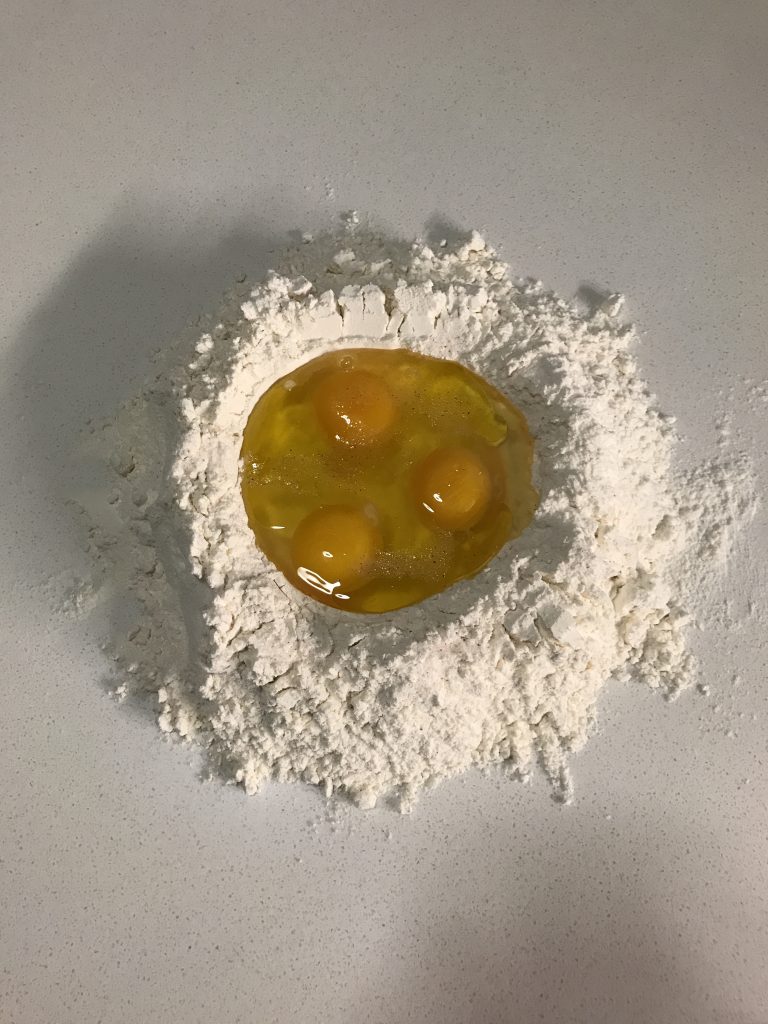
Scrambling in the flour:

Ready to roll:
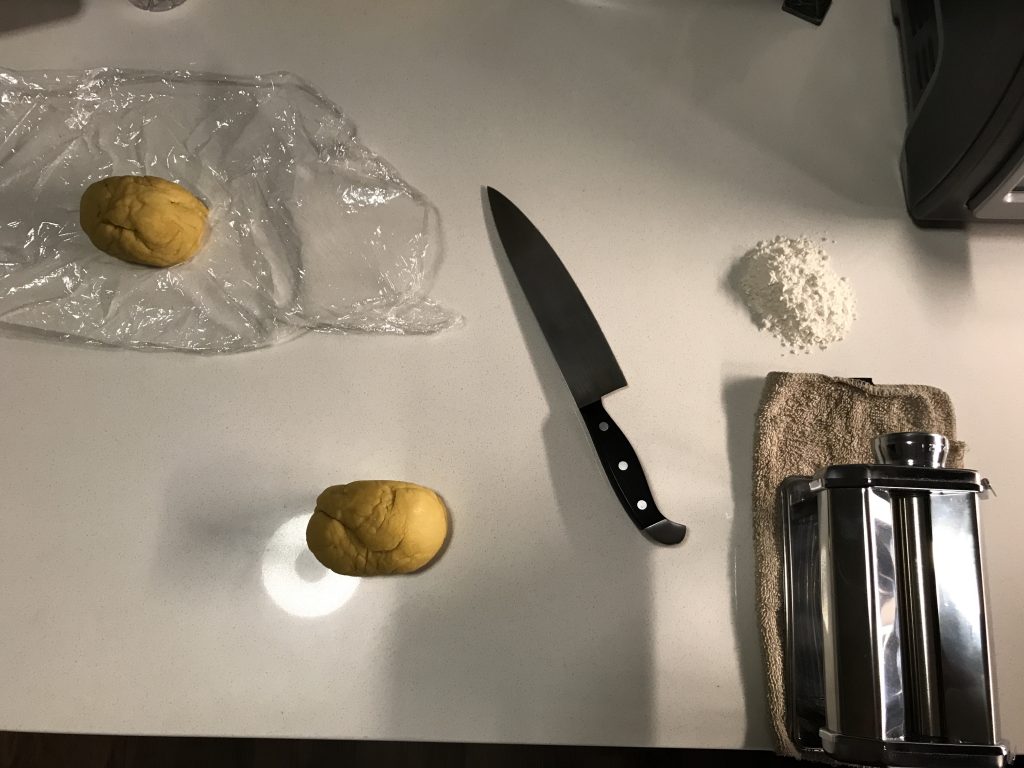
Half of the dough is enough for 2 people:
